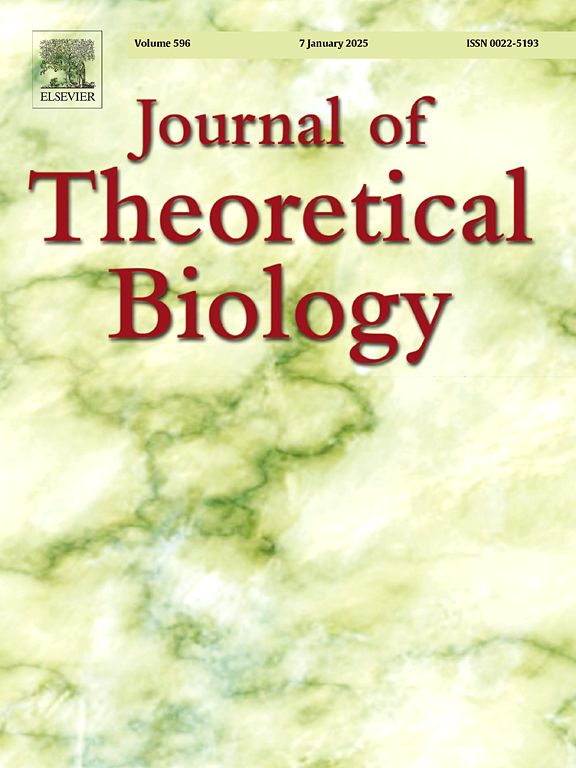Development of a mathematical model of the innate immune response to inhaled toxicants
IF 1.9
4区 数学
Q2 BIOLOGY
引用次数: 0
Abstract
Lung inflammation due to inhalation of toxicants such as wood smoke is a feature of many respiratory diseases, including asthma, chronic obstructive pulmonary disease (COPD), interstitial lung diseases, and respiratory infections. We present a mathematical model of immune cell and cytokine interactions in the presence of inhaled toxicants. The model, focusing on interactions between epithelial cells, macrophages, and pro- and anti-inflammatory cytokines, is constructed by developing several submodels calibrated to fit both experimental in vitro data and our understanding of the transition from type I to type II immune responses. The model’s predictions align with experimental observations, showing an initial pro-inflammatory (type I) response dominated by M1 macrophages transitioning to an anti-inflammatory/repair (type II) response characterized by M2 macrophages. Simulations of different exposure scenarios demonstrate that although a single exposure elicits a self-limiting inflammatory response, repeated exposures lead to persistent inflammation and elevated M2:M1 ratios consistent with chronic lung conditions. The model provides a novel mathematical framework that captures complex immune system transitions through a minimal set of equations, demonstrating how relatively simple mathematical structures can effectively represent sophisticated biological behavior while maintaining analytical tractability. Through stability analysis and careful parameter selection, we show that the model exhibits biologically relevant steady states that align with experimental observations. This framework enables the exploration of various exposure patterns and potential interventions on inflammatory dynamics, serving as a foundation for the future development of a virtual tissue model of macrophage–epithelial cell interactions.
对吸入毒物的先天免疫反应数学模型的建立。
吸入有毒物质(如木材烟雾)引起的肺部炎症是许多呼吸系统疾病的特征,包括哮喘、慢性阻塞性肺疾病(COPD)、肺间质性疾病和呼吸道感染。我们提出了免疫细胞和细胞因子相互作用的数学模型在吸入有毒物质的存在。该模型的重点是上皮细胞、巨噬细胞、促炎性细胞因子和抗炎性细胞因子之间的相互作用,该模型是通过开发几个亚模型来构建的,这些模型经过校准,以适应体外实验数据和我们对从I型到II型免疫反应转变的理解。该模型的预测与实验观察结果一致,显示由M1巨噬细胞主导的初始促炎(I型)反应转变为以M2巨噬细胞为特征的抗炎/修复(II型)反应。不同暴露情景的模拟表明,尽管单次暴露会引发自限性炎症反应,但多次暴露会导致持续炎症和M2:M1比值升高,这与慢性肺部疾病一致。该模型提供了一个新颖的数学框架,通过最小的方程集捕获复杂的免疫系统转变,展示了相对简单的数学结构如何有效地表示复杂的生物行为,同时保持分析的可追溯性。通过稳定性分析和仔细的参数选择,我们表明该模型具有与实验观察一致的生物学相关稳态。该框架能够探索各种暴露模式和潜在的炎症动力学干预措施,为巨噬细胞-上皮细胞相互作用的虚拟组织模型的未来发展奠定基础。
本文章由计算机程序翻译,如有差异,请以英文原文为准。
求助全文
约1分钟内获得全文
求助全文
来源期刊
CiteScore
4.20
自引率
5.00%
发文量
218
审稿时长
51 days
期刊介绍:
The Journal of Theoretical Biology is the leading forum for theoretical perspectives that give insight into biological processes. It covers a very wide range of topics and is of interest to biologists in many areas of research, including:
• Brain and Neuroscience
• Cancer Growth and Treatment
• Cell Biology
• Developmental Biology
• Ecology
• Evolution
• Immunology,
• Infectious and non-infectious Diseases,
• Mathematical, Computational, Biophysical and Statistical Modeling
• Microbiology, Molecular Biology, and Biochemistry
• Networks and Complex Systems
• Physiology
• Pharmacodynamics
• Animal Behavior and Game Theory
Acceptable papers are those that bear significant importance on the biology per se being presented, and not on the mathematical analysis. Papers that include some data or experimental material bearing on theory will be considered, including those that contain comparative study, statistical data analysis, mathematical proof, computer simulations, experiments, field observations, or even philosophical arguments, which are all methods to support or reject theoretical ideas. However, there should be a concerted effort to make papers intelligible to biologists in the chosen field.

 求助内容:
求助内容: 应助结果提醒方式:
应助结果提醒方式:


